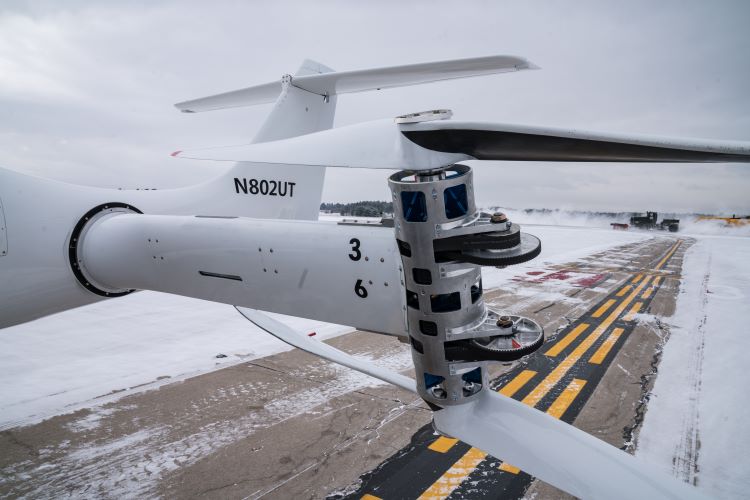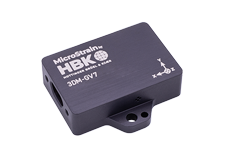Recent
-
-
MicroStrain by HBK at XPONENTIAL 2024
May 7, 2024 / Inertial
-
-
-
Introducing Version 4.0.0 of the MicroStrain ROS Driver
Jan 29, 2024 /
-
-
-
Enhancing Vision-Based Robots with IMUs
Dec 19, 2023 /
-
A Revolutionary eVTOL Prototype and the Sensors Used in its Development
- By Elena /
- Published Fri, 08/21/2020 - 15:31

As our society pushes for expanding the use of modern technology, we find we must improve how we monitor and gather information to build effective prototypes. Beta Technologies found this was necessary when developing a prototype for an Electric Vertical Takeoff and Landing (eVTOL) aircraft. Sensors are critical in capturing the massive data and accurate measurements in key environments.
n this situation, Beta Technologies was looking for a system that could monitor several conditions: temperature, vibration and strain for an all-electric eVTOL large enough to carry passengers. This was needed for component bench tests, as well as in-flight analysis. Additionally, to accurately monitor pitch, roll, angular rate, position and velocity measurements, an inertial measurement unit was required.
To tackle the challenges of monitoring the data on this prototype, MicroStrain sensors were used to monitor and analyze various characteristics and activities:
- To monitor the prototype’s flight control and flight characteristics, MicroStrain provided three GX5-25 inertial sensors to obtain pitch, roll and angular rate values.
- MicroStrain wireless sensors also were used to measure propeller thrust, vibration, strain and load characterization on the test stand.
- To measure revolutions, a tachometer was used.
- To help Beta measure strain from centrifugal load and bending, at speeds of up to 1200 RPM and loads from 10k – 20k lbs, ten or more strain gauges were mounted on the top and bottom surfaces of the propeller blades. MicroStrain’s V-Link-200 wireless nodes were employed to measure them in synchronized sampling mode at high sample rates.
- To test the static load on the airframe, strain gauges were mounted on the airframe structure. The strain gauges and load cells were measured at low sample rates using MicroStrain’s V-Link-200. API support for external sensor measurements
- Two MicroStrain TC-Link-200 wireless temperature nodes were employed to monitor and transmit the temperature of the 1500 lbs. of cylindrical lithium-ion battery cells.
- To monitor aerodynamically induced vibration as well as the detection of resonant frequencies, MicroStrain’s G-Link-200 wireless accelerometers were used at high sample rates.
Using MicroStrain sensors throughout the prototype provided the accurate and constant monitoring necessary for key test and measurement design data on Beta’s prototype aircraft. MicroStrain’s sensors were there to deliver the feedback Beta needed to continue improvements on the prototype.
Featured products:
Full Case Study
Beta Technologies’ eVTOL Development Takes Off with MicroStrain Sensors










